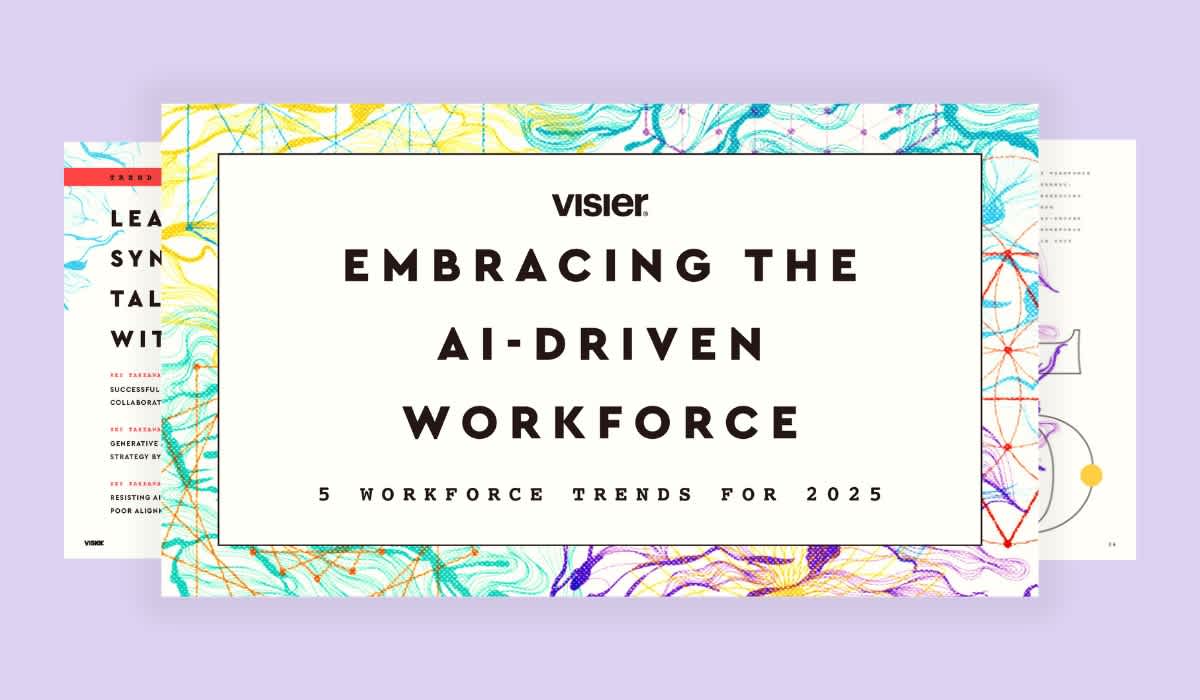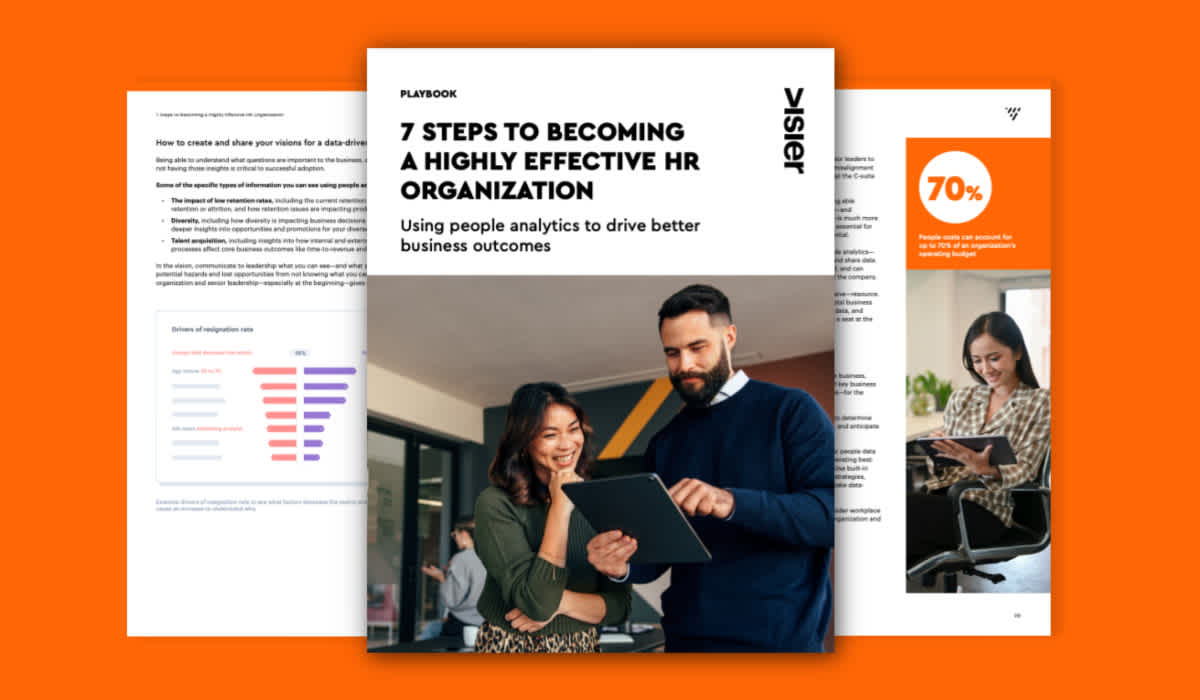The 100 Year History of the Human Resources Department
The history of human resources began in the early 1900s. HR has changed a lot, and today HR is strategic business partner.
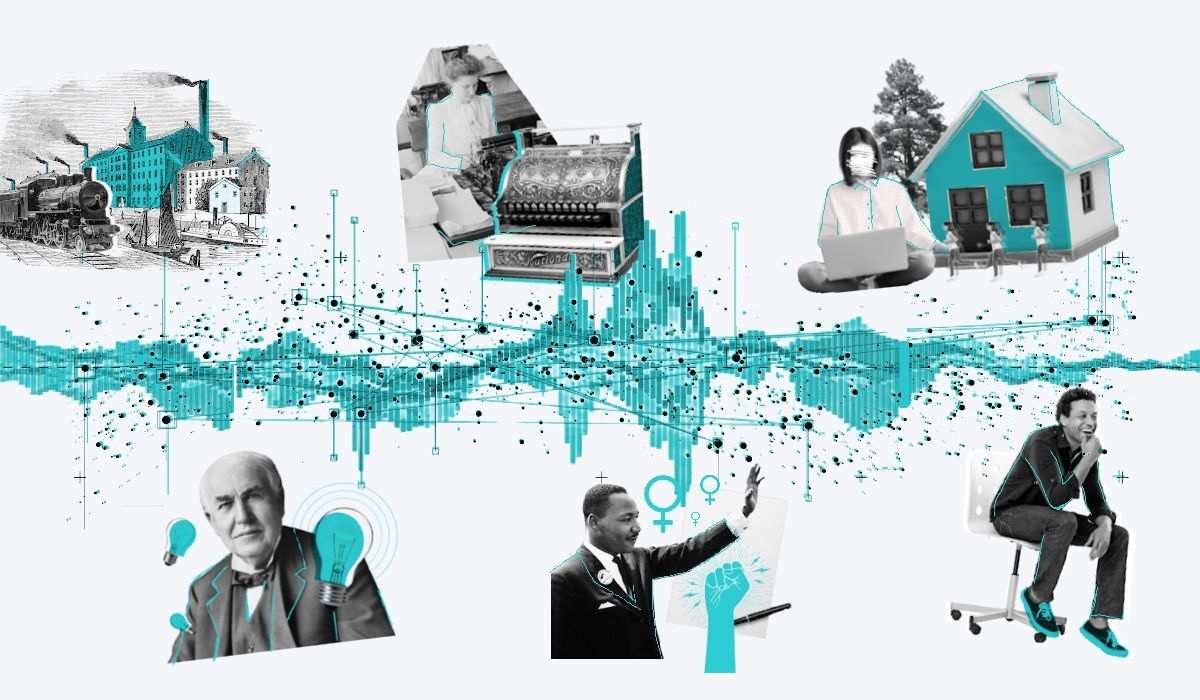
The HR department has been around since early 1900s, and it’s changed a lot—from managing payroll, to enforcing equality laws, to the modern strategic business partner it is today.
Human Resources (HR) is the first department called upon in a crisis and, unfairly, often the last department given credit for a business’ success. Yet, the role that the HR department plays within an organization is more involved in ensuring employee success (and therefore, business success) than any other department—it’s an employee’s first point of contact with an organization and most likely the last one, too.
Employees often get to know HR staff even before they’re actually an employee through the interview process. HR is generally involved in talent recruitment, talent acquisition, onboarding, and supporting new employees through their first several months on the job.
HR is there for all of the highs and lows of the employment journey—from promotions to pay rises, from discipline to disciplinary actions. And, of course, HR is likely to be involved at the end of an employee’s tenure with an organization, whether it ends with termination, layoff, or resignation. Along the way, in many organizations, HR is often responsible to some degree for payroll or payroll decisions, benefit administration, employee wellness, employee events, and a wide range of other activities.
Given all of the integral responsibilities of the HR function it seems impossible to imagine that there was a time before HR existed to support large organizations. But there was indeed. The HR function is relatively new in the world of work and, given its relatively brief tenure, it’s undergone remarkable change over the years—especially during the past 10 to 20 years and, of course, even more so over the past 18+ months as companies of all types and sizes have grappled with the pandemic and how to serve employees, customers, and other key stakeholders in new ways.
So, how did the idea of a department to manage “human resources” start? How has it changed? And, perhaps most importantly, where is it going? Here we take a look at the dramatic history of the HR function since its emergence early in the 20th century to today and how it’s evolved over the last century.

The Industrial Revolution and the changing employer-employee relationship

The late 19th and early 20th centuries saw immense technological, economic, and social change resulting from the Industrial Revolution. Emerging in Britain in the late 18th century, the Industrial Revolution involved the mechanization of traditionally manual processes, supported by new technologies, such as steam engines. Industries like textile manufacturing that had been carried out in homes at the level of the family unit for hundreds of years were transformed into mechanized mass production, often involving workers operating out of large-scale factories instead of their own homes.
The Industrial Revolution ushered in significant societal transformations in Britain as well as in the United States, where it had firmly taken hold by the middle of the 19th century. Before the Industrial Revolution, American labor was overwhelmingly agricultural, with farmers working for themselves or family members or a neighbor. Employment relationships were personal and small-scale. But, with the growth of factories and mechanization, more work was conducted in factories employing large numbers of workers who might never meet the owner of the company.
The social separation between employer and employee meant that employee grievances were often ignored or unheard, and the tremendous power of new machines meant that working conditions were often more dangerous than what a 19th-century farmer might have previously experienced.
The origins of HR—the early 20th century
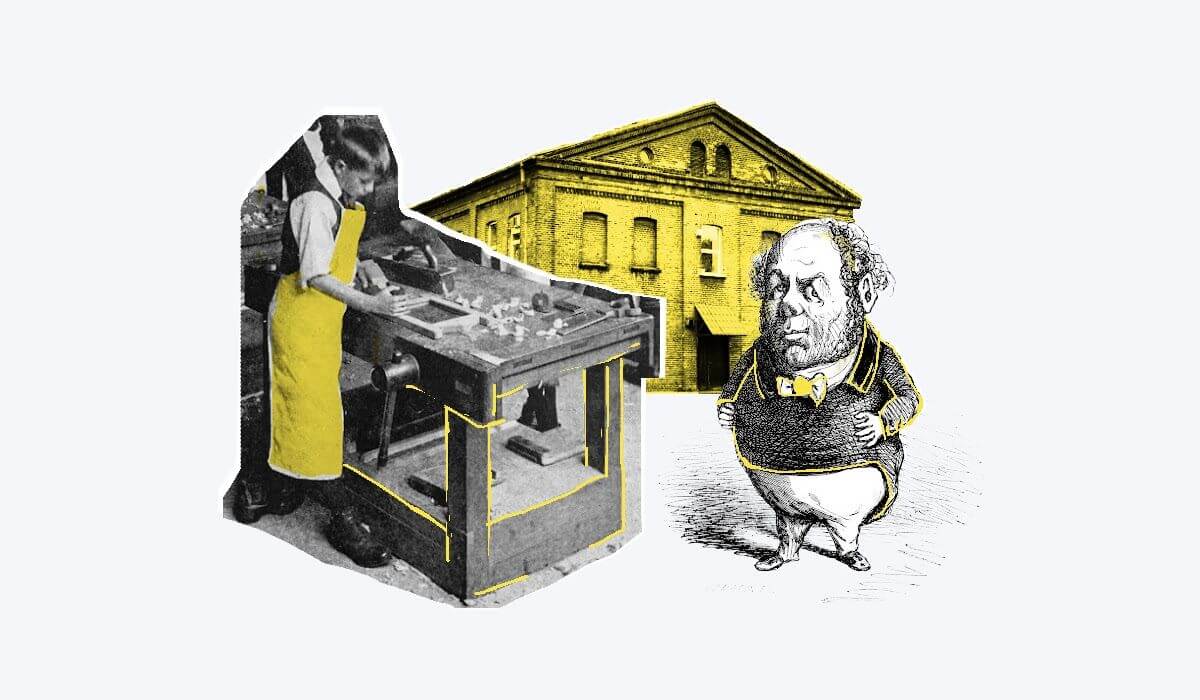
By the late 19th and early 20th centuries, employee unrest and conflicts between employees and employers had come to a head. Fed up with unfair labor practices and consumer safety concerns, growing numbers of Americans aligned themselves with the Progressive Movement, which sought to expose and address the dark side of industrialization and unchecked capitalism and to seek change through new legislation and constitutional amendments.
At the same time, workers across the country were taking a more direct—and often violent—approach to seeking change. This period saw violent plots by groups like the Molly Maguires and violent and deadly clashes between workers and employers like the Haymarket Affair and the Ludlow Massacre.
It was an era marked by the emergency of groups like the Human Resources Management Association of Chicago. Established in 1915, it’s considered to be one of the oldest HR organizations in the US. Today, the Society for Human Resource Management (SPHR) is a widely recognized, international, HR organization, launched initially in 1948 as the American Society for Personnel Administration.
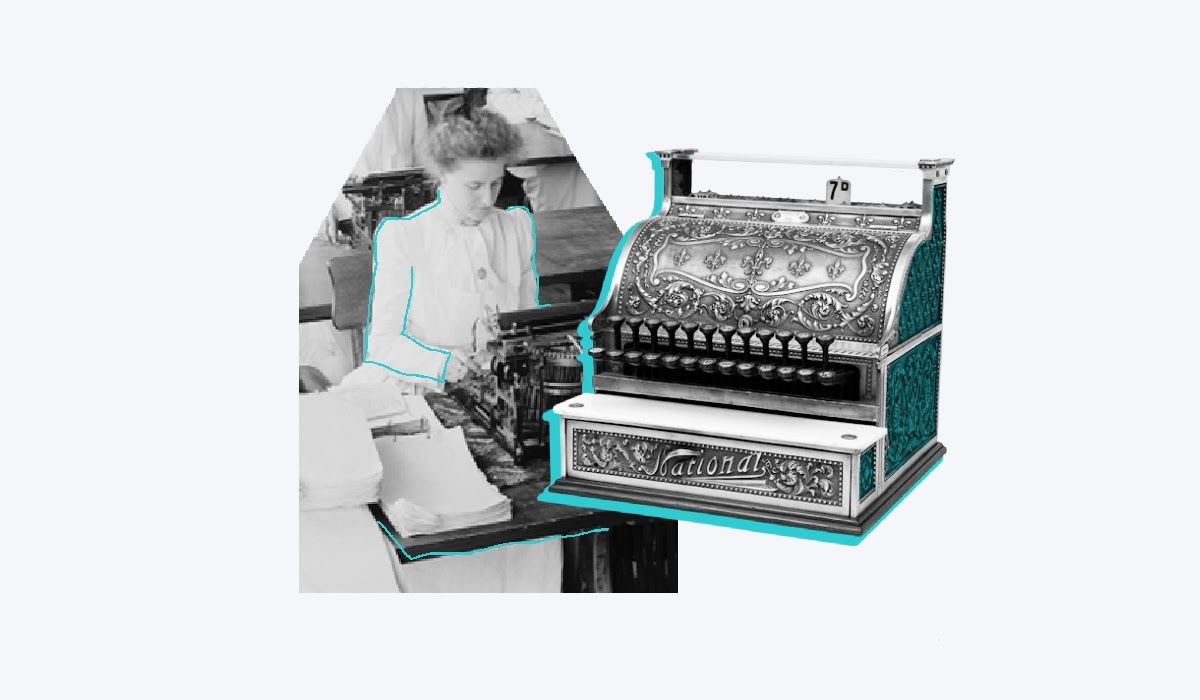
A woman working with typewriters in around 1902 at the National Cash Register (NCR) in Dayton, Ohio. This cash register (later computing) company was founded in 1884.
While many employers violently resisted calls for improved labor conditions, it was clear that the status quo was unstable, and some companies started looking for ways to improve relations with their workforce. HR departments, formerly referred to as personnel departments, also became common around this time, with 20% of companies having such departments by 1920, compared to just 5% in 2015.
The first prototype-HR department is generally attributed to the creation of a personnel management department by the National Cash Register Co. in the early 1900s. The department was created in response to a number of strikes and employee walkouts and was charged with handling worker grievances, discharges, and safety issues and for training supervisors on new laws, regulations, and company policies.

War mobilization and a new focus on recruitment
America’s entry into World War I in 1917, followed by its participation in World War II beginning in late 1941, created enormous demand for military personnel and labor in industries that supported the war effort. America’s success in both conflicts was arguably due as much to its industrial capacity as to its fighting prowess. That industrial capacity required a huge labor force.
With such a high demand for labor across multiple industries and applications, increased focus was placed on the labor selection process. Increasingly, employers were looking to find workers who were not simply “able-bodied,” but also cut out for the specific needs of the position to be filled.
The late 20th Century—HR as rule enforcers
Part of the novelty of the popular AMC series Mad Men is its eyebrow-raising depiction of sexism, racism, substance abuse, and harassment in the 1960s Madison Avenue ad agency in which the series takes place. While obviously fictional, the series depicts a culture that was all-too-common up until the latter half of the 20th century.
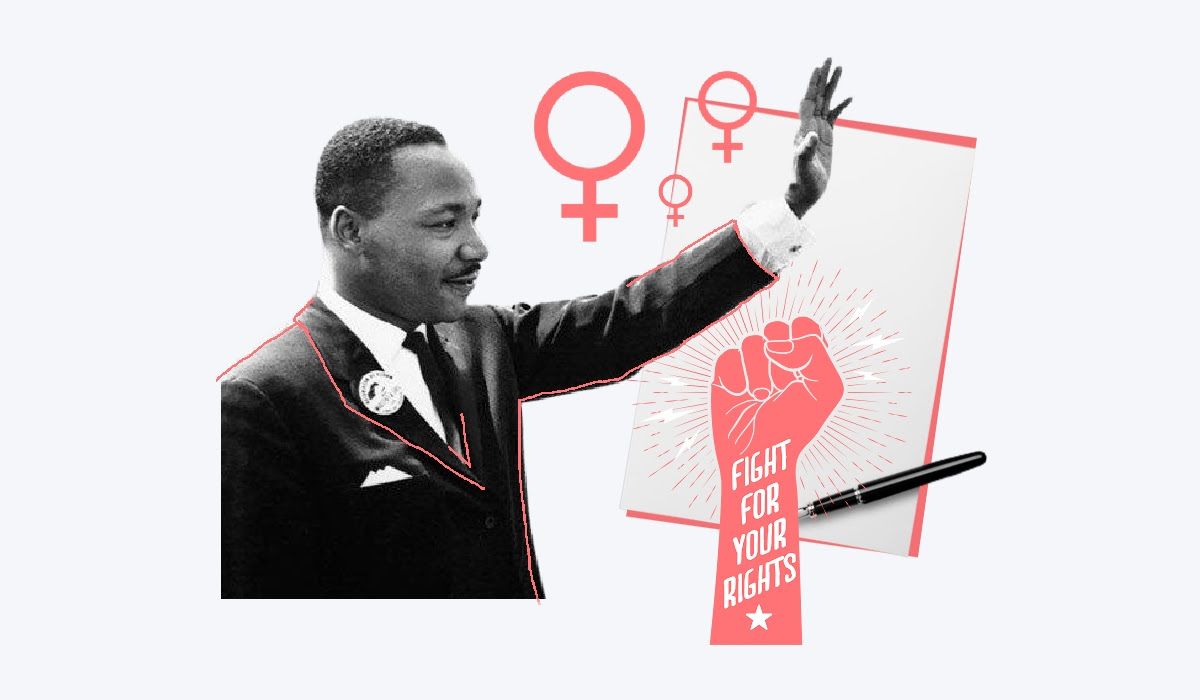
As greater national attention became focused on issues of gender and racial discrimination, major national legislation such as the Civil Rights Act of 1964 and the Equal Employment Opportunity Act of 1972 created significant new obligations for large employers as well as stiff penalties for failure to meet those obligations. As attitudes toward discrimination and harassment based on sex, race, religion, disability, and later sexual orientation, changed, the public relations fallout from such behaviors became significant—and potentially damaging for those companies that failed to comply with the rules and regulations, subsequently becoming the target of potential legal and regulatory penalties.
The social changes of the 1960s and 1970s, says Ruhal Dooley, SHRM’s HR Knowledge Advisor, “created a need for ‘personnel’ to evolve into ‘human resources’.” These same forces, he says, continue to impact the field today.
“From a more administrative and clerical job, by 1980, personnel had become more concerned with legal ramifications and overall consequences of the formerly clerical functions of personnel and payroll, including how people were paid, record keeping, and helping organizations to strategize when it came to the leveraging of human capital,” Dooley says. “As technology grew more efficient, far-reaching, and accessible by more groups, and as the nation grappled with social change in terms of demands for divestiture in the 1980s, companies leaned a lot more on the evolving profession to help fix its “people problems.”
It was against the backdrop of the late 20th century anti-discrimination legislation that much of the stereotypical image of HR as a “fun-killing corporate police force” developed. Boring videos of bad actors illustrating what does and does not constitute sexual harassment became fodder for movies and sitcoms, and employees worried about getting too chummy with their HR reps, lest they land in hot water over an off-color joke.
The hardline corporate response to anti-discrimination policies during this period are understandable. The penalties for violating new legislation are often severe, and the novelty of the laws meant companies often took a better-safe-than-sorry approach to enforcement of new rules. However, the perceived single-minded focus of HR departments on overzealous and draconian enforcement caused a major setback for worker perceptions of the HR function that continue in many ways to this day.

HR today: an emerging strategic partner
Human resource management today is a far cry from its early 20th-century position as a rule enforcer.
While HR departments retain many of the tasks they were initially assigned back when they first entered the scene at the National Cash Register Co.—addressing worker grievances, training supervisors on company policies, etc.—HR’s mandate and importance has increased tremendously. Compliance with laws and regulations, addressing employee grievances, and the hiring process are all seen as baseline, compulsory capabilities for HR professionals—but just the tip of the iceberg when it comes to their impact on the modern organization.

Modern businesses see HR not simply as a necessary evil to avoid getting into trouble over employment laws—instead, they see it as a key factor in gaining a competitive advantage over competitors. Companies that attract, hire, engage, develop, and retain the best talent are simply going to outperform those that fall short in these areas.
The profession has shifted from being viewed as “rule enforcers” to one focused on optimizing the effectiveness of an organization’s human capital assets. From focusing on the administrative aspects of people management—policy development, payroll, and benefit administration—HR has evolved into a strategic function focusing on organizational culture and employee engagement, informed by the use of people analytics.
Much of this shift in the purpose and practices of HR is due to the fact that the American economy has changed so much in the century since the first personnel departments were put in place. Instead of simply needing to find a set number of commoditized “able-bodied men” to perform general labor and operate the machinery that was a company’s greatest asset, employees today are a company’s greatest asset. In an information-based economy, talent and ideas (and the employees who have them) are differentiators.
4 ways modern HR contributes to business value
To further illustrate this point, consider some of the key elements of the modern HR function:
1. Employee training and development
HR teams invest huge amounts of resources in training their staff on new technologies and processes as well as creating frameworks within which to measure and track employee growth in areas central to the company’s success. Training is no longer limited to a crash course at the start of employment; talent development is an ongoing process that continues throughout the employee lifecycle.
2. Diversity, equity, and inclusion
Companies increasingly see diversity and inclusion as key to creating holistic approaches to creative problem solving at all levels of the organization as well as strategies to serve diverse American and global markets. Today they also understand the importance of “equity” and ensuring that employees feel that they are equitably treated throughout their tenure with the company.
HR teams are central in efforts to recruit diverse talent, to advance diverse talent through the organization through tools like mentorship programs, and to keep them engaged through initiatives like employee resource groups and the support of an open, transparent and inclusive communication environment.
3. Competitive analysis and benchmarking
Just as companies compete with other companies for market share, they also compete for talent. Similarly, just as a company might look at how a competitor is pricing its products and services to customers or what kind of value-adds they offer to entice consumers, HR departments compare how attractive their organization is to work for relative to competitors in their industry and in the broader labor market.
4. Increasing employee engagement
Two similarly qualified employees working the same hours with the same resources might produce very different results based on their levels of engagement. Engagement includes elements such as how committed the employee is to the success of the company, how clearly they see the link between their efforts and that success, and how fulfilled they are in their day-to-day work and long-term career with the organization. Modern HR departments spend a lot of time and effort working to increase engagement, employee retention and, ultimately, productivity, revenue, and profit.
Today, each of these areas of focus is increasingly achieved through the use of data and technology—especially generative AI—to enable more valid and reliable decision-making and to achieve efficiencies.

HR’s pandemic-related evolution: From employee support to strategic partner
HR’s critical role has arguably never been more obvious since the pandemic—an unanticipated event of massive proportions and implications that HR and other senior leaders needed to quickly address to ensure continued operations. Over the past several months it’s fair to say that the HR role has become more visible and more foundational to the ongoing function of the organization than at any other time in its history. In many organizations, quite literally, it’s fair to say that organizations would not have been able to remain viable without their HR leaders.
This is a pivotal time in the history of HR and one that is likely to be pointed back to as another milestone in the history of a role that is relatively young, but increasingly important—strategically—to the organizations it serves. This will require new, more refined skills.
The Academy to Innovate HR (AIHR) has identified 18 skills that today’s HR professionals must possess—from soft skills to “business acumen and digital and data literacy.” It’s a unique role that requires empathy and people skills as well as, increasingly, being analytical and data-driven and having a command of existing and emerging technology.
In serving in this critical role, HR has been fortunate to have access to tools, technology, and data to help streamline operations, minimize the time required for staff to perform manual operations, decrease errors, improve employee access to data and information, and make data available, on-demand, to leaders and others throughout the organization. Technology fuels access to and effective use of data while freeing up HR leaders’ time to build relationships with organizational leaders and drive the strategic deployment of increasingly scarce human resources.
The impact of AI

The impact of artificial intelligence (AI) and generative AI (genAI) has been significant for HR professionals. AI has made it possible to streamline and automate many of the administrative and repetitive tasks of HR management, freeing up practitioners’ time to focus on more strategic priorities.
Writing for HR Executive, Visier’s Chief Innovation Officer Adam Binnie says: “With generative AI and good people data, HR can unlock the next level of performance.” GenAI is particularly poised, he says, to:
Drive improved performance management
Boost manager effectiveness
Amplify recruitment and talent acquisition strategies
Position HR as a strategic partner
AI will dramatically impact the future of HR across every stage of the employee lifecycle—from talent acquisition to employee engagement to performance management to benefit administration, training and development, and more.

The future of HR

HR has moved far beyond being a “touchy feely” part of the organization to being a function that drives sound decision-making and goal achievement through the strategic use, and sharing, of data across the enterprise. Today’s HR professionals must have a solid understanding of people analytics and how to use data to assess progress, opportunities for improvement, and as the basis for building use cases to move desired strategic initiatives forward.
Technology has been a great enabler for the HR profession. People analytics has allowed organizations to evaluate staffing needs, performance, productivity, engagement, and turnover risk. The democratization of data means that information is readily available to HR leaders, staff, managers, supervisors, and others who can make better and more data-informed decisions more quickly and reliably.
GenAI will continue to have a major impact on the industry as technological advancements evolve its power and promise to create efficiencies, boost productivity, and drive more personalized approaches to employee relations and management.
“The social contract between companies and employees has been elevated. During the pandemic, employees saw what companies could achieve when they pulled out all the stops. Now, as we enter the next macroeconomic phase, HR must leverage AI to find innovative and sustainable ways to engage and delight employees.”
Brad Woodfield
Senior Director, People Analytics, with DeVita Kidney Care
The human resources profession has evolved tremendously since its earliest iterations roughly one hundred years ago, so much so that modern HR would be largely unrecognizable to the personnel management department of the National Cash Register Co.

